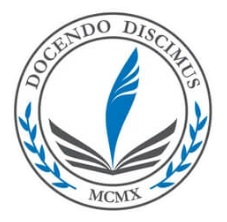Please use this identifier to cite or link to this item:
https://rep.vsu.by/handle/123456789/39341| Title: | Morphological and genetic analysis of Dendrodrilusrubidus (Bimastos rubidus) (Oligochaeta, Lumbricidae) in Russia and Belarus |
| Authors: | Ermolov, S. A. Shekhovtsov, S. V. Geraskina, A. P. Derzhinsky, E. A. Kotsur, V. M. Poluboyarova, T. V. Peltek, S. E. |
| Keywords: | Dendrodrilus rubidus (Bimastos rubidus) morphometric analysis cytochrome oxidase I (cox 1) subspecies species form |
| Issue Date: | 2023 |
| Publisher: | Пензенский государственный университет |
| Citation: | Morphological and genetic analysis of Dendrodrilusrubidus (Bimastos rubidus) (Oligochaeta, Lumbricidae) in Russia and Belarus / S. A. Ermolov, S. V. Shekhovtsov, A. P. Geraskina, Е. A. Derzhinsky, V. M. Kotsur, T. V. Poluboyarova, S. E. Peltek // Russian Journal of Ecosystem Ecology. – 2023. – Vol. 8, № 1. – P. 15–27. – DOI: 10.21685/2500-0578-2023-1-2. |
| Series/Report no.: | Russian Journal of Ecosystem Ecology;Vol. 8, № 1 |
| Abstract: | The systematic position of the earthworm Dendrodrilus rubidus (Bimastos rubidus) has been changed many times due to differences in its anatomy and external morphology, which were revealed in individuals that at first glance belonged to the same species. Deviations from existing diagnoses also made taxonomic determination difficult. The research goal is to conduct comparative morphometric and molecular genetic analyses of D. rubidus (B. rubidus) individuals from different regions of Russia and Belarus to identify accurate diagnostic features. Materials and methods. For the study, we collected four samples of adult individuals of D. rubidus (B. rubidus), depending on geographical location. The worms were collected in the territories of Russia (European part, Western Siberia, North-Western Caucasus) and Belarus. Morphometric analysis was carried out according to the main qualitative and quantitative anatomical and morphological features. The variability of the mitochondrial cytochrome oxidase I (cox 1) gene used in molecular taxonomy was evaluated using molecular-genetic analysis. Further the data obtained from the two analyses were compared. Results and conclusions. Previously, it was believed that only two subspecies of D. rubidus (tenuis and subrubicundus) were present in the studied territories, which are currently considered to be species forms. During the study, we found three forms of this species: tenuis, rubidus and subrubicundus. The revealed anatomical and morphological differences make it possible to determine the species forms of adult individuals of D. rubidus, taking into account possible deviations from generally accepted diagnoses. There were no significant molecular-genetic differences between the different species forms. |
| URI: | https://rep.vsu.by/handle/123456789/39341 |
| ISSN: | 2500-0578 |
| Appears in Collections: | Научные публикации (2023) |
Files in This Item:
| File | Description | Size | Format | |
|---|---|---|---|---|
| Morphological and genetic analysis.pdf | 2.36 MB | Adobe PDF | View/Open |
Items in DSpace are protected by copyright, with all rights reserved, unless otherwise indicated.
Ресурсы наших партнёров:
Репозиторий Белорусского национального технического университета
Электронная библиотека Белорусского государственного университета
Электронная библиотека Гомельского государственного технического университета имени П.О.Сухого
Электронный архив библиотеки МГУ имени А.А. Кулешова
Репозиторий Полесского государственного университета
Электронная библиотека Полоцкого государственного университета
Научный репозиторий Могилевского института МВД Республики Беларусь









